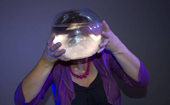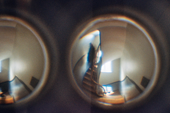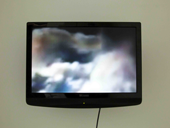Editorial
From the very beginning, the notion of practice that JAR has employed has included its own communication – or exposition, as we call it – as research. This implies that key concepts relevant to contemporary art can be engaged with even in the context of something as scholarly – and for some boring – as a journal article. In this editorial, I would like to sketch the relevance of appropriation to expose the point at which stable notions of ‘research’ are jeopardised. Such instability is perhaps difficult to evaluate but, we believe, exciting to engage with. Looking back over this and all previous issues, it becomes increasingly clear that, beyond more specific uses of ‘appropriation’, the term deserves more attention in the debates around artistic research in general.
Appropriation usually refers to the use of somebody else’s work as part of a new work. This new work depends on the meaning of what has been appropriated; nevertheless, at the same time, the original meaning has shifted in the act of appropriation. There is something transgressive – if not aggressive – in appropriatory practices since they add to and take away meaning in a mode not determined by the appropriated. The gesture is one of independence.
Having said this, it is interesting to note that, normally, appropriation seems strangely inappropriate in the context of research. ‘Research,’ so it seems, lies in the construction of chains of meaning, which aim primarily to preserve that meaning rather than create it. When meaning is believed to pre-exist, for example in a work of art, the modes of communication – in particular in the context of research – can often be drained of their own artistic and knowledge-generating function.
Appropriation infuses such chains with different trajectories. While the appropriated and the appropriating are inextricably bound together in the links of a chain – say, a research exposition – they do not point to the same origin. That is, when practice exposes itself as research using appropriatory gestures, it actually also dislocates itself, creating multiple, offset histories in which perspective is not predetermined. Furthermore, if appropriative expositionality happens in multiple links of the chain, what we are given are not one or two historical trajectories but several, which, without convergence, move the chain forward.
This may sound more complicated than it is. To take a famous example, which, like all examples, is open to debate: what happens when Duchamp appropriates his own work in his famous Box in a Valise? I would say that, amongst other things, he liberates his work from the objects themselves – such as the Large Glass or the Nude Descending a Staircase, No. 2 – dislocating a belief that we could interpret any of the ‘original’ objects conclusively on their own. This has the effect that alternative readings emerge that are as original as the ‘originals’. And, while the box already contains chains – think of the Mona Lisa and L.H.O.O.Q. – it also projects these chains forward as possible movement of continuous (self-)appropriation.
The point here is not to add to an idealisation of Duchamp, but to suggest that artists’ publications when seen as appropriative open up work to understanding while, at the same time, stepping out of the confines of interpretation and criticism. Whether branded ‘research’ or not, this is how the myriads of artists’ books, for example, may also be seen and it is a model that should not be excluded from journal publications of artistic research.
Appropriation is first of all material practice; it is not an interpretative reflection on a material. Expositions of practice as research are sites of collision, and may perhaps even be considered the combustion engines of artistic research – at least, this is what JAR is here to test. In this sense, even if ‘appropriation’ is not directly referred to in any given exposition, its status as artistic expression may already make it contain aspects of appropriation.
In the most general way this may also be applied to the very notion of ‘research’ itself, since it is not impossible to assume that by around 1990 at the latest art had appropriated the notion of research, a situation that many have also negatively interpreted as ‘appropriation’ of art by academia or ‘the knowledge economy’ in general. Nevertheless, following the above speculations, neither art nor research can emerge intact, offering both a risk and a chance. Ultimately, following the logic of appropriation – and with it the logic of contemporary art – meaning needs to be made in materially- and socially-concrete constellations, which cannot be bypassed by reference to preconceived registers. This, at least, is what we see in any exposition that we publish.
In the current issue, Anna Walker engages with the events of 11 September 2001 in her contribution In and out of memory: Exploring the tension when remembering a traumatic event as an attempt to come to terms with her own traumatic memory. Across three different stages, material is worked and reworked as Walker struggles to invent an artistic language capable of voicing such memory.
In Hinges of correlation: Spatial devices of social coexistence, Espen Lunde Nielsen artistically investigates a very concrete lived environment, his own apartment block. As he does this, the walls of his flat become more and more porous, highlighting the collective dimensions of architecture.
In Migration research in collaboration with Tamil Sri Lankan artists in the British diaspora, Anna Laine combines artistic and anthropological approaches in order to focus better on the precarious status of art within British Tamil communities. Laine’s exposition highlights the role artistic practice can play in autoethnography, if not in interdisciplinary research in general.
Hilde Synnøve Blix and Geir Davidsen share their research using the euphonium in Divergent voices – Different dialogues in the artistic research project Wikiphonium. They focus in particular on the importance of dialogue for their methodology, for which they also harnessed an online collaborative workspace.
In Beware the danger of merging: Conceptual blending and cognitive dissonance in the work of IOU Theatre, Deborah Middleton and Tim Moss apply the model of ‘conceptual blending’ to the work of the British-based theatre group IOU. In doing so, they are able to highlight IOU’s modes of meaning generation, which focus on materiality, thereby counter-balancing conceptual integration.
Michael Schwab
Editor-in-Chief




